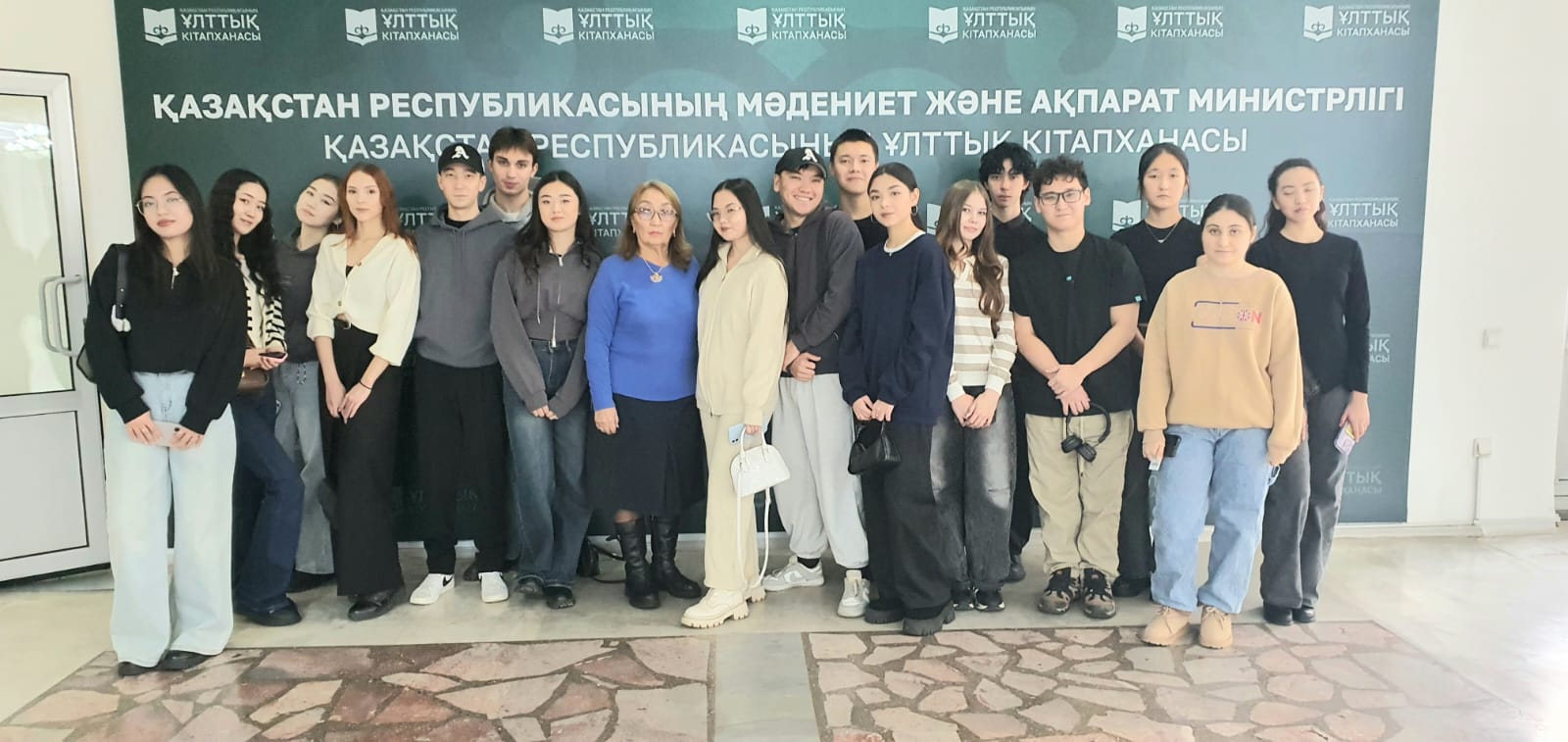Excursion of “Ölketanu” Club Students to the National Library of the Republic of Kazakhstan
On November 6,
2025, the Associate Professor of the Department of Social and Humanitarian
Disciplines and World Languages at the International Engineering-Technological
University and head of the “Ölketanu” Student Club, S. D. Shaimukhanova,
organized an educational excursion with second-year students to the National
Library of the Republic of Kazakhstan. The main purpose of the visit was to
broaden students’ cultural and intellectual horizons, to foster interest in
national history and heritage, and to cultivate a deep respect for reading and
cultural values.
During the excursion, students learned about the rich history and development
of the National Library. Its origins date back to 1910, when the Verny City
Library named after L. N. Tolstoy was founded. In 1920, the institution became
the Semirechye Regional Public Library, later transformed into the Almaty
Provincial and then District Library. Over time, it grew into one of the most
significant cultural and research centers in the region, playing a vital role
in the fields of library science, Kazakh book history, and national
bibliography. The first director of the library was Uraz Zhandosov, a prominent
statesman and public figure who greatly contributed to the development of
education and culture in Kazakhstan. In 2020, by decree of the President of the
Republic of Kazakhstan Kassym-Jomart Tokayev, the library was granted the
status of “National Library.” Today, its collection exceeds seven million books
and documents, attracting more than one million visitors annually, with book
lending reaching nearly two million copies.
In the same year, the library opened two thematic centers dedicated to the
175th anniversary of the great Kazakh poet Abai Kunanbayev and the 1150th
anniversary of the philosopher and scholar Al-Farabi. These centers have become
important cultural and educational platforms promoting Kazakhstan’s
intellectual and spiritual heritage. During the visit, students explored the
modern architecture of the library, visited the rare books and manuscripts
section, the electronic resources hall, and the multimedia centers. They were
introduced to modern methods of preservation, digitization, and open access to
information. Such educational visits play an important role in expanding
students’ knowledge, nurturing national identity, and fostering respect for
Kazakhstan’s cultural and historical heritage.

